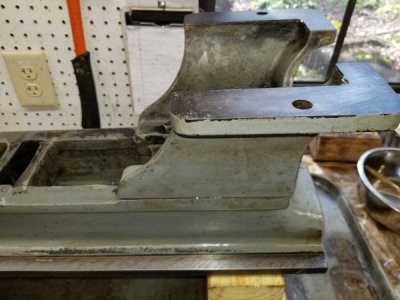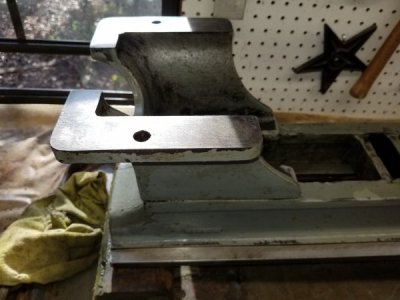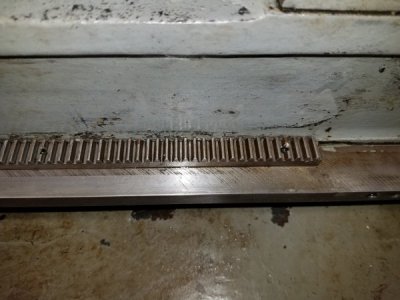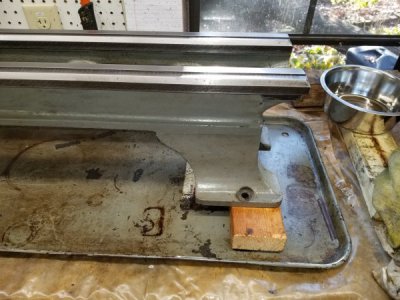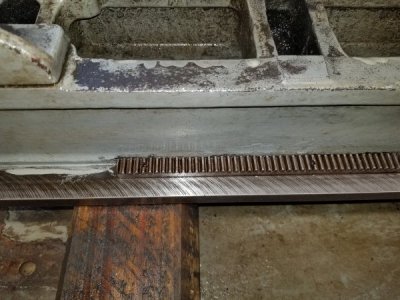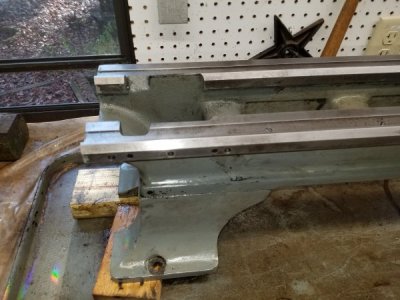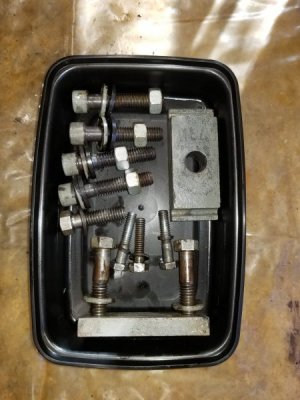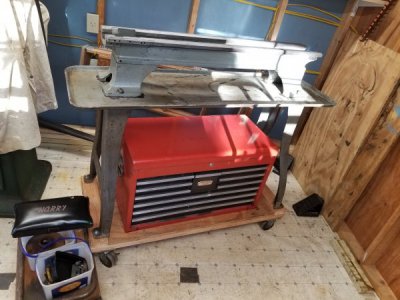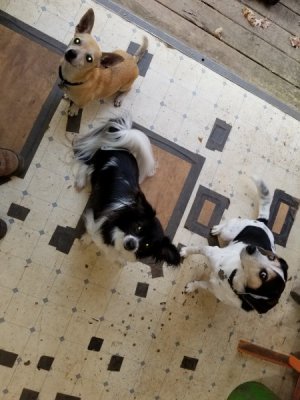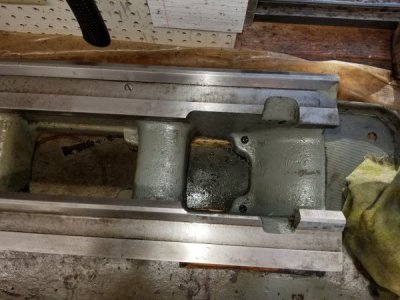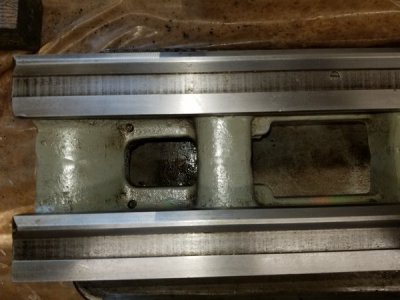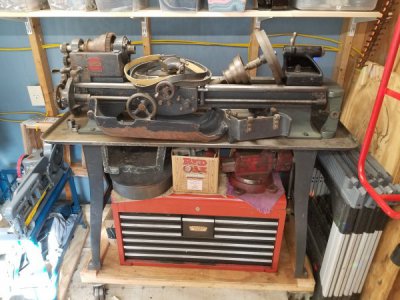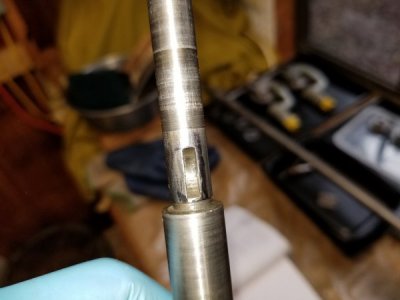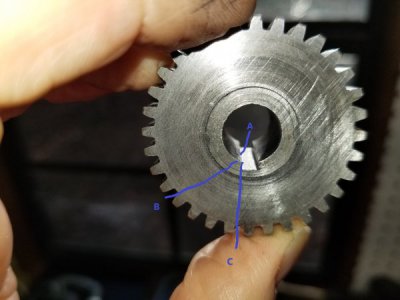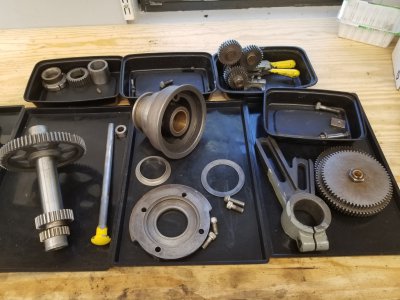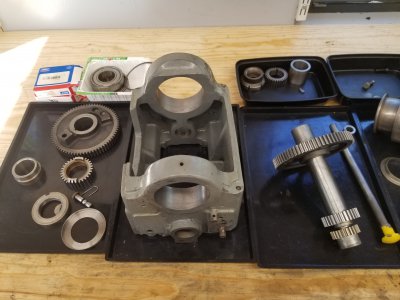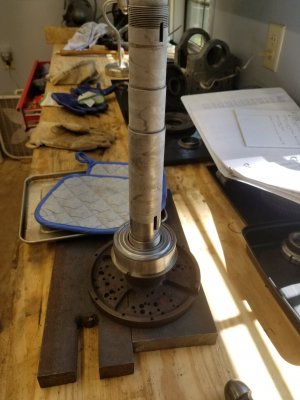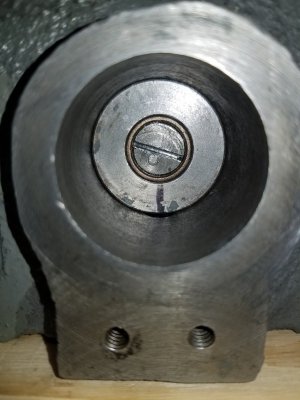Day 2
Well it looks like some of the grease residue is probably as old as the lathe. Serial number is 59563 which would make 1952 as the year of manufacture, if I am reading the chart correctly (which I did not do last week). Well, we have all heard of the “measure twice cut once” rule and part of my coping with my aging process is I now “read several times” to make sure I understand what I am reading. That along with spell check help keep my mild dyslexia in check.
For non-critical work such as cleaning I like to listen to music so I listened to the “Paul Butterfield Blues Band” via Spotify on my new vintage Boston Acoustics HD-8 speakers, which really sound good in a small 10'x14' shed. Nothing like getting lost in some music while cleaning up old gunked up grease off a lathe bed. Need to buy another gallon of WD-40 as I like to use that for cleaning up stuff and hope to have the bed cleaned up by tomorrow.
Buy the way it is great fall weather around here for this cleaning up as I like good ventilation when working with WD-40.
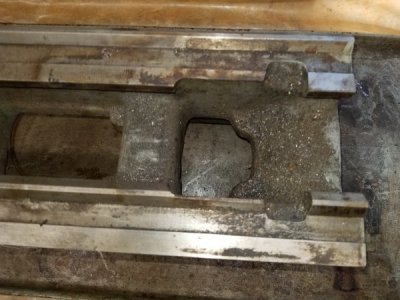
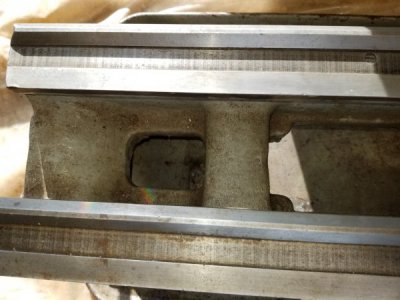
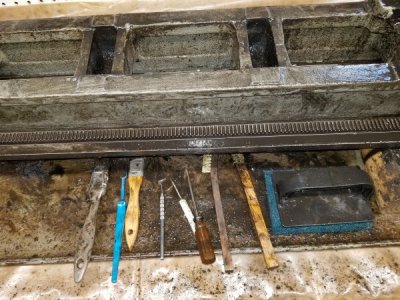
Well it looks like some of the grease residue is probably as old as the lathe. Serial number is 59563 which would make 1952 as the year of manufacture, if I am reading the chart correctly (which I did not do last week). Well, we have all heard of the “measure twice cut once” rule and part of my coping with my aging process is I now “read several times” to make sure I understand what I am reading. That along with spell check help keep my mild dyslexia in check.
For non-critical work such as cleaning I like to listen to music so I listened to the “Paul Butterfield Blues Band” via Spotify on my new vintage Boston Acoustics HD-8 speakers, which really sound good in a small 10'x14' shed. Nothing like getting lost in some music while cleaning up old gunked up grease off a lathe bed. Need to buy another gallon of WD-40 as I like to use that for cleaning up stuff and hope to have the bed cleaned up by tomorrow.
Buy the way it is great fall weather around here for this cleaning up as I like good ventilation when working with WD-40.





